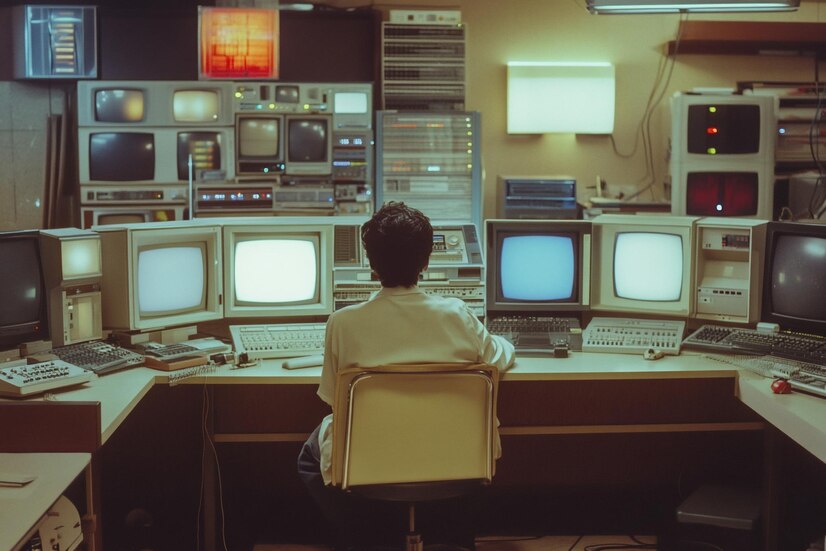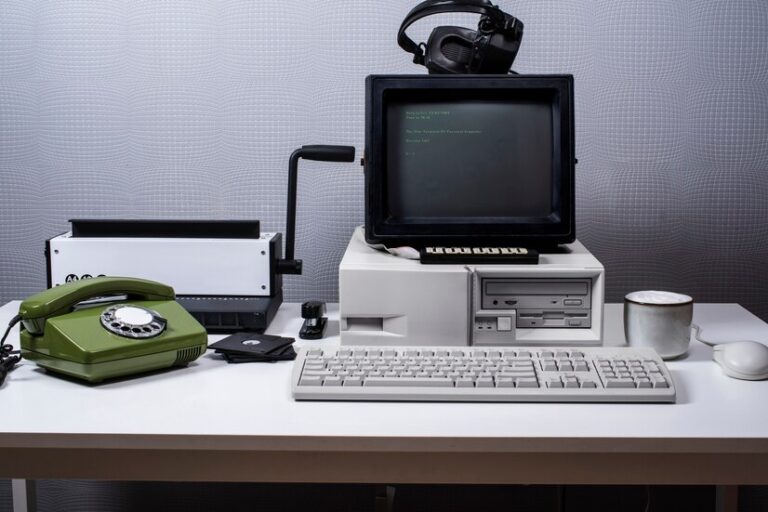When you think of vintage tech, the nostalgia of clunky keyboards, early operating systems, and enormous monitors likely comes to mind. While modern displays today are sleek, ultrathin, and incredibly vivid, old PC monitors from the 1980s, 90s, and early 2000s hold a special place in the hearts of tech enthusiasts, vintage collectors, and gamers.
These monitors marked technical milestones that changed the way we interacted with computers. More than just screens, they were (and still are) symbols of earlier advances in computing and gaming. Want to explore how this tech shaped computing history, gaming culture, and evaluate the legacy they’ve left behind? Sit back as we take you through the fascinating world of CRT monitors, early LCD screens, and more.
The Technology Behind Vintage Monitors
Before flat screens and OLED technology became dominant, earlier PC monitors relied on groundbreaking (but now outdated) innovations. To understand their significance, we need to examine three major technologies that defined vintage PC monitors.
Cathode Ray Tube (CRT) Monitors
The first widespread PC monitors were Cathode Ray Tube (CRT) displays. CRT monitors were boxy, heavy, and took up a decent chunk of your desk real estate—but at the time, they were revolutionary. These monitors worked by using electron beams to light up phosphor-coated glass screens, producing images one pixel at a time.
Key features of CRT monitors:
- Refresh Rates: CRTs supported extremely fast refresh rates, often making them ideal for competitive gaming in their era—a legacy modern gaming monitors build on.
- Color Accuracy: CRT monitors had excellent color fidelity and contrast, which made them great for media editing and immersive gaming experiences.
- Durability: Despite their bulk, these monitors were long-lasting, and many still work decades after purchase.
Though CRT displays fell out of favor due to their weight and size, their responsive performance remains a fond memory for retro gamers chasing gaming nostalgia today.
Liquid Crystal Display (LCD) Monitors
Next, entering the spotlight were early Liquid Crystal Display (LCD) monitors. Initially heralded as sleek and space-saving alternatives to CRTs, LCDs transformed computing ergonomics.
How LCD technology works:
LCD monitors rely on liquid crystal layers to modulate light from backlights and create display images. Their thin cabinets revolutionized home and office computing setups, making them highly sought after.
Why tech enthusiasts loved early LCD monitors:
- Lightweight Design: Far lighter than CRTs, LCDs provided flexibility for work and even portable setups.
- Sharper Resolution: While early models lagged behind CRTs in brightness and refresh rates, advances quickly allowed LCDs to match, if not surpass.
- Smaller Workspace Needs: Desk space optimization became much easier for offices and home setups.
Plasma Monitors
Though not as widely used in PC setups as CRT or LCD technology, plasma screens emerged as interesting alternatives in the 90s and early 2000s. Plasma monitors utilized electrically charged ionized gases to create images, which resulted in deeper contrasts than some LCDs could achieve at the time.
Notable benefits:
- Vivid Colors: Exceptional brightness and a wider color range made plasma screens captivating for entertainment purposes.
- Enhanced Viewing Angles: Gamers and movie enthusiasts appreciated the wide-angle viewing experience.
Despite these perks, plasma monitors were energy-intensive and expensive, which eventually led to their decline.
The Impact of Vintage Monitors on Gaming and Entertainment
For gamers, CRT monitors were more than just displays—they were game-changers. Titles like DOOM, Quake, and even the beloved Age of Empires came to life in a way modern simulations owe their roots to. CRTs especially excelled in the era of multiplayer LAN parties where refresh rates and response times mattered most.

Early LCD monitors ushered in a new wave of gaming convenience—clearer images, reduced weight for portability, and later adaptive frame rate technologies offered a smoother gameplay experience. Vintage gaming enthusiasts revisit these displays to relive the tactile gaming experiences that newer hardware, optimized for pixels and resolutions, sometimes can’t replicate.
Entertainment was transformed too—early plasma monitors made movie night with blockbusters feel cinema-grade for their time. Movies rendered on these nostalgic displays carry an unparalleled charm for collectors.
Advantages and Disadvantages of Old vs. New Monitors
Understanding the pros and cons of vintage monitors can help contextualize their enduring appeal while putting modern advancements into perspective.
Advantages of Vintage Monitors
- Gaming Nostalgia: The retro gaming experience on CRT displays is unmatched in recreating the tactile responsiveness many modern gamers long for.
- Durability: Older monitors withstood a beating—or two! Many CRTs and early LCDs continue to function perfectly today.
- Accessibility for Collectors: Affordable to acquire for enthusiasts eager to preserve computing history.
Disadvantages of Vintage Monitors
- Weight and Size: CRTs were extraordinarily bulky and too heavy for smaller desks or frequent relocation.
- Lower Energy Efficiency: Consuming far more electricity than current screens, these vintage monitors wouldn’t fit into today’s energy-conscious setups.
- Outdated Compatibility: Many older monitors lack suitable ports for modern systems, requiring adapters to connect.
The Value of Vintage Tech in a Modern World
For tech collectors, vintage monitors remain artifacts of a bygone era—items that transport them back to their first PC builds or gaming victories. Beyond their nostalgic value, many tech enthusiasts see them as pivotal to charting the evolution of display technology.
CRT monitors are especially prized among retro gamers due to their low input lag and accurate color representation. LCDs and plasma screens, on the other hand, are growing popular in technology museums and media art installations celebrating early 2000s design aesthetics.
How to Preserve and Restore Vintage Monitors
Caring for a vintage monitor requires some effort but ensures their preservation for years to come.
- Clean Properly: Use non-abrasive cleaning solutions and microfiber cloths to remove dirt and debris without damaging their delicate coatings.
- Avoid Sunlight and Heat: Prolonged exposure to sunlight or excessive heat can degrade the internal components of older screens.
- Inspect and Test Regularly: Plug in and test your monitors occasionally to avoid circuitry corrosion caused by disuse.
- Store Responsibly: Keep monitors in climate-controlled environments away from moisture or dust.
There are also online communities and forums where you can source replacement parts or tips for restoring vintage displays to functional brilliance.
Nostalgia Meets Innovation in Tech
While technology is moving forward at an astonishing pace, there’s incredible wisdom in looking back. Old PC monitors, from the iconic CRTs to early LCDs, remind us of the milestones that have shaped today’s computing landscape.
For tech enthusiasts, these screens are more than hardware—they’re windows into a simpler, formative time. Whether you’re a collector of vintage tech or simply a curious observer, these time-tested screens help bridge the nostalgia of the past with advancements of the present.
Curious to learn more about vintage tech? Share your thoughts or favorite nostalgic monitor moments below!
